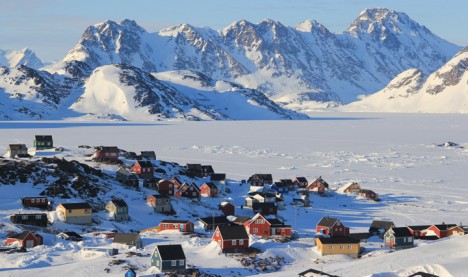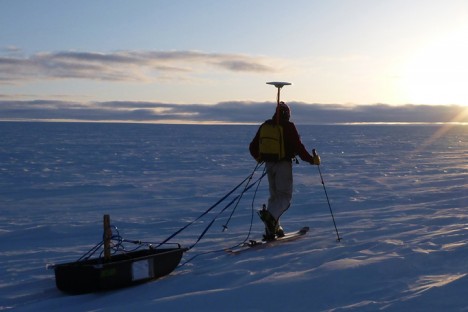Hi there,
Our team is heading back to Southeast Greenland after about two months spent away from the ice sheet. These two months were busy; they consisted of fixing and maintaining some of our equipment (tents, thermal drill, piezometer heads…), starting to analyze samples, process the data collected in the spring, and preparing the logistic for the summer fieldwork. This fieldwork initially was planned for September, but to accommodate everyone’s schedule within the team, and the start of classes, we pushed the field experiment forward, from the end of July to August 20.
For this summer, we’ll have five team members from the spring field team. Nick and Lynn, based at the University of Maryland will be leading the seismic survey. Anatoly, from LTHE Grenoble (FR), will be in charge of the magnetic resonance soundings, while Olivia and I, based at University of Utah, will be doing hydrology measurements, firn coring, radar surveys and maintaining the iWS from IMAU Utrecht. This intelligent Weather Station (iWS) developed at IMAU in the Netherlands, was initially set up in the spring of 2014 with Ludo. We will be missing Lora, Kip and Josh who were part of the spring field campaign.
At our ice camp, the snow surface conditions will be quite different compared to our work this last spring. Not sure if you remember, but we were facing some extreme snowfalls last April, this snow was cold with relatively fine grains in general. During the summer, the story will be different: we are expecting wet snow due to melting at the surface. In fact, since June 20, 2015 the air temperatures have been rising above 0˚C, leading to surface melt. Hopefully this wet snow does not turn into slush which would make the camping a bit more challenging.

Plot of a time series of the air temperature (C) at our site since we left the field at the end of April 2015. We note positive temperatures starting around mid-June, an onward.
The goals for this summer are the following:
- Seismic: armed with a sledge hammer, we will be hitting a metal plate, initiating sound waves which will propagate in the subsurface. The velocity changes of theses waves can be related to density changes and the presence of water in the subsurface
- Magnetic resonance soundings: another noninvasive geophysical method using the signal generated by the magnetic resonance of water molecules to detect the aquifer vertical boundaries and water content.
- Hydrology: measure water level, hydraulic conductivity and collect water samples to understand how fast water moves through the aquifer.
- Radar measurements to image the water table spatial variations (400 MHz) and a lower-frequency system (~10-40 MHz) to also get the water-saturated firn to ice transition at greater depth.

Nick is practicing a few sledge hammer swings during the training at the PASSCAL facilities, Socorro, NM.

As a reminder, here is a photo of Kulusuk in the spring; we will take another photo from this summer to illustrate the landscape differences.
We are expecting iceberg floating in the ocean and fishermen using boats to get around instead of dog sledding on the sea ice. Stay tuned and we will be sending another update once our team is reunited in Southeast Greenland, getting our gear ready for this upcoming work on the ice sheet.
All the best,
Clément Miège
Tags: cryosphere, drilling, Greenland, Greenland Aquifer Expedition 2015, ice






Dear friends
What are the coordinates of your research area?
In the late seventheis we flew a 60MHz radui echo sounder oved the Greenland.ice cap.
Maybe we have a flight line or two that could give a prespective of what you are doing.
In southwest Greenland wwe did observe at great deal of what we termed ice lenses that preented us from seeing the bed rock.
All the best and good luck
Preben